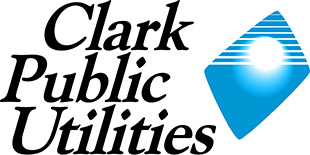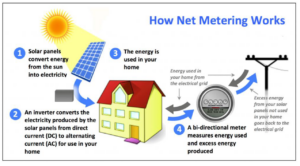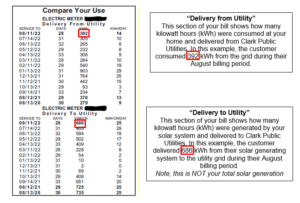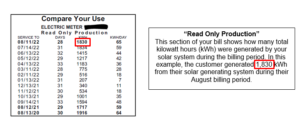Here are some common questions about solar energy and our net-metering program. This information is for reference only and we encourage you to talk with a contractor and independently verify all current information related to solar prior to signing any installation agreement or contract.
How much do these systems typically cost?
Estimated system costs can be roughly approximated at $2.75 – $4.50 price per watt (PPW) (8,000 W system x $2.75 to 4.50 PPW = $22,000 to $36,000).
These prices have been declining over the past few years as the industry has grown. Nationally, a considerable amount of the project cost is in the installation process.
Clark Public Utilities recommends that customers obtain cost estimates from several contractors before moving forward on installing solar generating systems.
How much do meters and fees cost?
Most production meters (single phase, 240 volts and below) cost $250 plus tax. Single phase meters over 240 volts and three phase meters cost $550 plus tax. Application fees are $100 for systems under 25 kW and $500 for systems over 25 kW. These fees should be included in the cost of the solar project charged by the contractor.
Is there financing available?
Some contractors offer financing or payment plans. Please inquire with the contractors about what they provide.
There is also a federal tax credit available.
How does net metering work?
How do I read my bill with solar?
There are a few important sections of your new monthly Clark Public Utilities bill you’ll want to review each month. On the right-hand side of your bill you’ll notice a “Compare Your Use” section; this section provides you with:
These three different pieces of data allow you to calculate your total consumption, your total solar electricity generation and also determine how much of your solar electricity was consumed at home, or delivered to the Clark Public Utilities grid. Using the above example, we can calculate:
- Total August Electricity Consumption:
- Delivered from Utility (392 kWh) + Read Only Production (1,830 kWh) – Delivered to Utility (686 kWh) = 1,536 kWh
- Total Solar Generation:
- Read Only Production = 1,830 kWh
- Solar Generation Consumed at your Residence:
- Read Only Production (1,830 kWh) – Delivered to Utility (686 kWh) = 1,144 kWh
- Solar Generation Delivered to Clark Public Utilities
- Delivered to Utility = 686 kWh
All customers that participate in the Net Metering program receive the retail rate value of every kWh that is generated by their renewable energy system, whether the electricity is consumed onsite or delivered back to the utility grid. Electricity delivered from your solar generating system to the utility grid is credited to your account and offsets electricity delivered from the utility to your home on your next bill. If your solar generating system was installed during the winter months, you likely won’t see much of an impact on your bill until the summer.
What if I generate more than I use?
If production exceeds consumption, the utility allows customers to carry a credit from month to month. On March 31st of each calendar year the excess production is cleared from the customers balance per Washington State RCW 80.60.30.
How long does the process take?
The length of the process has several different variables. Once Clark Public Utilities receives the interconnection application the process begins. The application is usually processed within four working days. This includes our Technical Services department reviewing the electrical schematics. Once the application is approved, the contractor can build the system.
Then once the project is complete, we ask the contractor to email us proof that the electrical inspection has occurred by the permitting agency. Clark Public Utilities then verifies the inspection has passed and confirms that the fees have been paid to the Utility. After confirming those items, a meter technician is assigned to install the meters. Typically, the Utility installs the new meters within five working days.
Clark Public Utilities is not responsible for lost production credits due to any delays in the installation process.
Note: This process can take longer for systems sized over 25kW.
What is Clark Public Utilities role in the process?
Clark Public Utilities is there to make sure there is a safe and reliable connection between your generation system and the electrical grid. The Interconnection Application provides the necessary guidance for installation. Once the system has been installed, Clark Public Utilities maintains the monthly billing and the net-metering credits.
What is the customer’s role in the process?
The system is purchased by the customer. All terms and agreements surrounding that purchase are between the customer and the contractor. The application and meter fees can be paid by either the customer or the contractor depending upon what agreement has been made between the two parties. The application needs to be signed by the owner of the system.
Also, the system will need to be inspected by the local permitting agency. Depending upon where the worksite is located will dictate which agency.
What is the contractor’s role in the process?
The contractor can assist the customer with the interconnection agreement process, but the owner must sign agreement. The contractor is responsible for installing the system and is point of contact for Clark Public Utilities if there are any questions about the installation. Once the installation is complete, it is helpful for the contractor to notify Clark Public Utilities to expedite the process.
Who are the solar contractors?
You can find a list of contractors participating in the utility’s Contractor Network link to Contractor Directory here.




